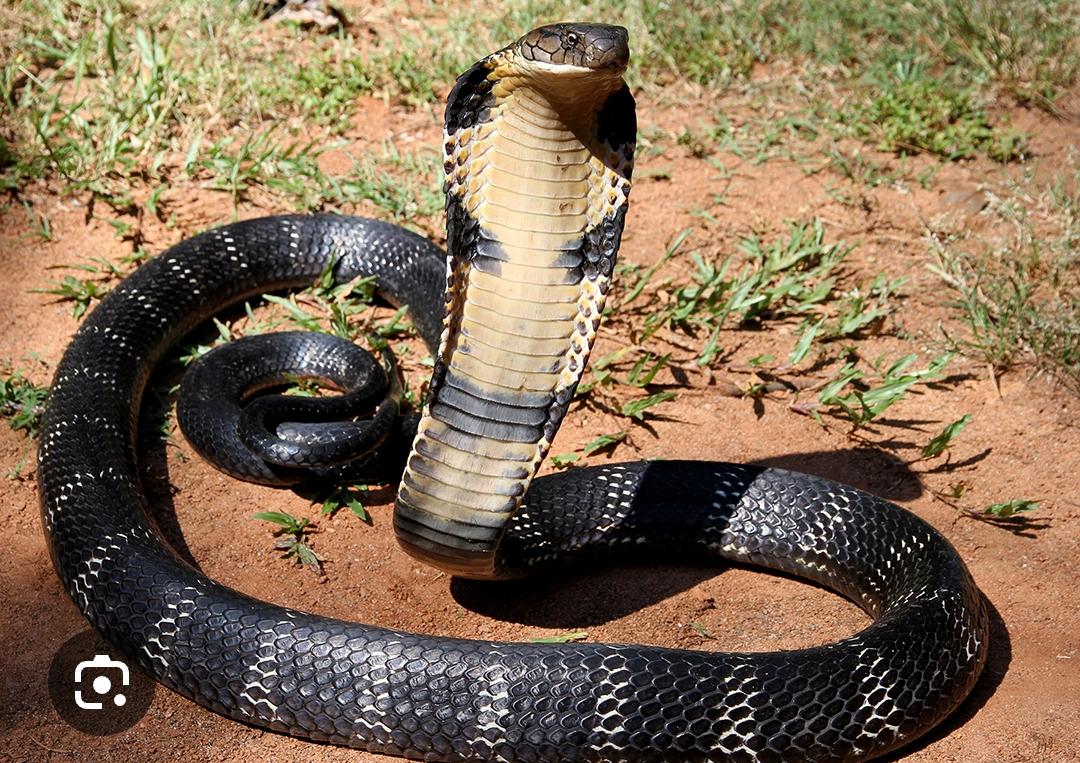The deadly king cobra is the longest of all venomous snakes and easily claims the title of "king": this powerful reptile feeds mostly on other snakes and often lives for decades in the wild, as there are few other animals that can kill this kind of snake. Found mostly in the rainforests and swamps of Asia, king cobras prefer habitats with thick vegetation, such as bamboo and mangrove thickets.
The deadly king cobra is the longest of all venomous snakes and easily claims the title of "king": this powerful reptile feeds mostly on other snakes and often lives for decades in the wild, as there are few other animals that can kill this kind of snake. Found mostly in the rainforests and swamps of Asia, king cobras prefer habitats with thick vegetation, such as bamboo and mangrove thickets.
Here are eight facts that will offer insight into the mysterious and intriguing world of the king cobra.
1. The King Cobra Is the Longest of Venomous Snakes
There are hundreds of species of venomous snakes in the animal kingdom, but the king cobra is the longest of them all. An adult snake can be 10 to 12 feet long and weigh up to 20 pounds. When a cobra "stands," it can be eye to eye with a human of average height. The longest king cobra on record measured at 18 feet. As a comparison, the python, the longest non-venomous snake, can grow 20 feet long.1
2. King Cobra's 'Hoods' Are Actually RibsWhen a king cobra is on the defense, it produces a distinctive hood that flares around its face. This hood, like other parts of the snake's body, has markings unique to the king cobra. At first glance, the snake's hood looks like part of its skin, but it's actually a system of rib bones and muscles that can flex and move. To make itself appear larger and more dangerous, the king cobra spreads these ribs and fans out the hood as it hisses and "stands" up.
3. Their Venom Is a Deadly Neurotoxin
Poisonous snakes are generally divided into two venom classifications: neurotoxic and hemotoxic. A neurotoxin is any poison directly affecting a human's or animal's nervous system. Hemotoxins, on the other hand, are typically found in rattlesnakes and vipers and affect a human's or animal's bloodstream. A king cobra's venom is neurotoxic—when the snake strikes, it produces a small amount (mere ounces).2 Even this small amount can send the snake's prey into paralysis. Moreover, this venom is so poisonous that a human can die within minutes of being bitten. A large animal—such as an elephant—can die in a few hours.
4. King Cobras Are Cannibals
King Cobras are considered cannibalistic because they generally only eat other snakes. Occasionally, they may eat a small animal, rodent, or bird, but that's more characteristic of a common cobra. Cobras' stomachs have adapted with digestive juices to break down other snakes' poison and render it safe, so even if another snake is venomous, the king cobra isn't affected. Since king cobras don't have any teeth, they eat their prey whole. The cobra's jaws can stretch and open wide to allow large animals to pass through, although it may take several minutes for them to swallow an animal entirely.

